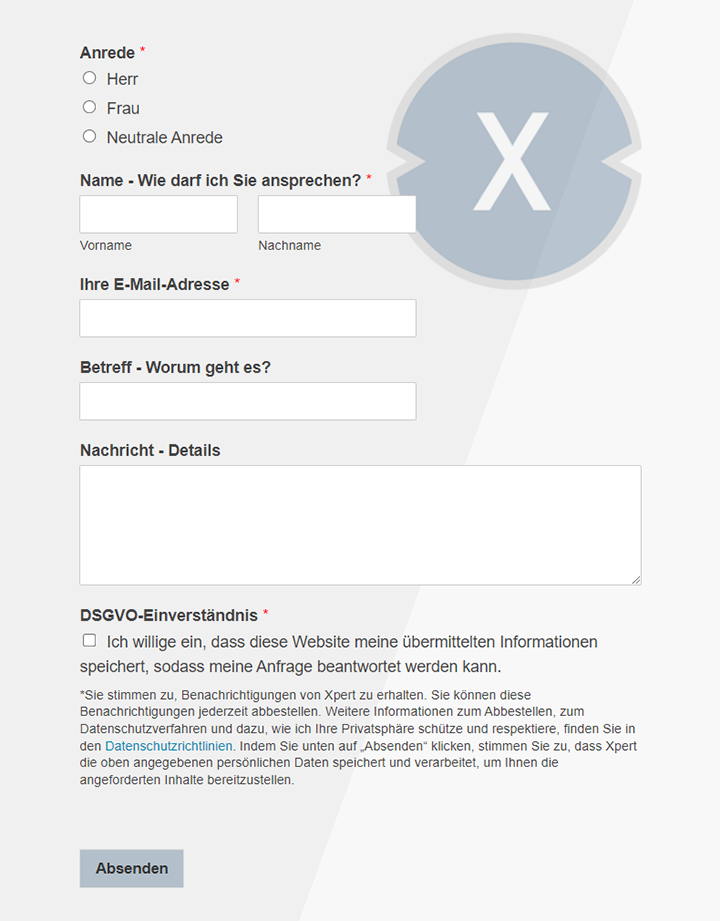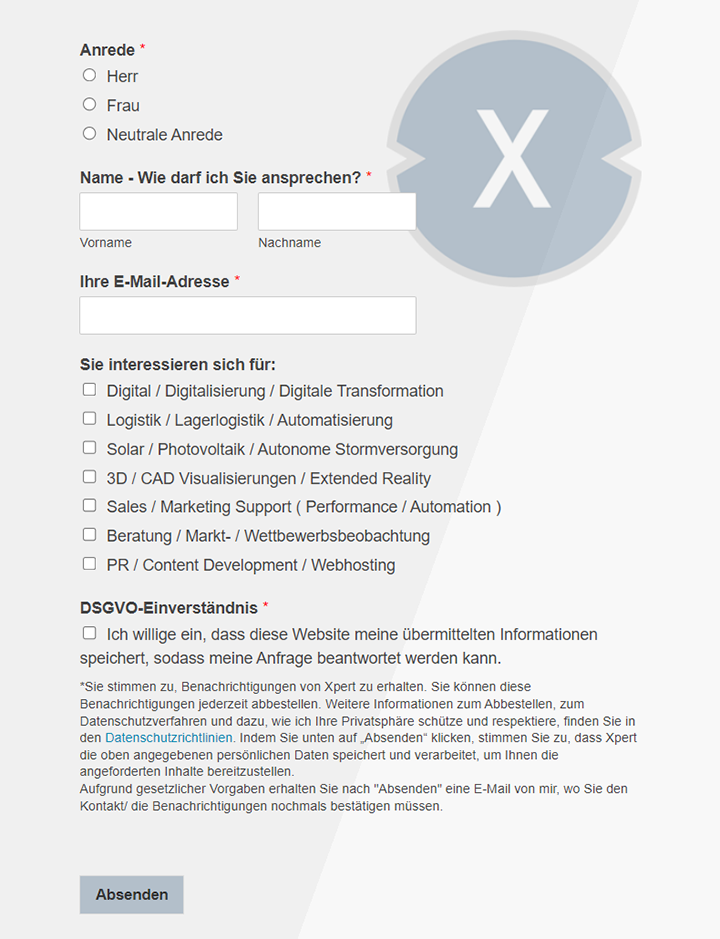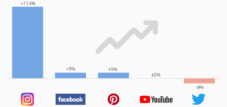The discrepancy between traffic figures in different analysis tools and their hidden causes
Xpert pre-release
Language selection 📢
Published on: September 11, 2025 / Updated on: September 11, 2025 – Author: Konrad Wolfenstein

The discrepancy between traffic figures in different analysis tools and their hidden causes – Image: Xpert.Digital
Are your visitors real—are they all? The surprising truth about bot detection errors
### Do you trust Google Analytics? This costly mistake is distorting your entire strategy ### Why your analytics tools don't know your true visitor numbers ### From bots to GDPR: The invisible enemies that sabotage your web analytics ### Analytics chaos: The hidden reasons your traffic numbers never add up ###
More than just numbers: What your web analytics is really hiding from you
Anyone who runs a website knows the frustrating feeling: A glance at Google Analytics shows one number, the server log shows another, and the marketing tool shows a third. What appears to be a technical error or a simple inaccuracy is actually the tip of a complex iceberg. The discrepancy between traffic numbers is not a bug, but a systematic problem deeply rooted in the architecture of the modern internet. The simple question "How many visitors do I have?" no longer has a simple answer.
The causes are as diverse as they are invisible. They range from aggressive bot detection systems that mistakenly filter out real people, to strict data protection laws like the GDPR that create massive data gaps through cookie banners, to modern browsers that actively block tracking for privacy reasons. Added to this are technical pitfalls such as faulty cross-domain tracking, the statistical pitfalls of data sampling, and the invisible role of caching systems that render some of your visitors invisible to your servers.
These inaccuracies are more than just cosmetic flaws in a report. They lead to incorrect conclusions, misdirected marketing investments, and a fundamentally distorted picture of user behavior. If you don't understand why your numbers differ, you're making decisions blindly. This article delves deep into the hidden causes of these discrepancies, unravels the complexity behind the scenes, and shows you how to make informed and strategically wise decisions in a world of incomplete data.
Suitable for:
- SST Pioneers | The end of the cookie age: Why companies rely on server-side tracking – Facebook, Pinterest & TikTok
Why traffic is not the same as traffic
Measuring website traffic seems simple at first glance. However, the reality is more complex, with different analytics tools producing different numbers for the same website. These discrepancies arise not from coincidence or technical errors, but from fundamental differences in the way traffic is captured, processed, and interpreted.
The problem begins with the definition of what should be counted as valid traffic. While one tool counts every page view as a visit, another filters out automated access or only considers visitors who have JavaScript enabled. These different approaches lead to numbers that seem contradictory at first glance, but all have their justification.
The challenge becomes even more complex when you consider that modern websites are no longer simple HTML pages, but complex applications with multiple domains, subdomains, and integrated services. A user can begin their journey on the main website, move to an external payment service provider, and then return to a confirmation page. Each of these steps can be tracked differently depending on the tool used and how it is configured.
The hidden pitfalls of bot detection
When people become bots
Automatically detecting bot traffic is one of the most complex tasks in web analytics. Modern bot detection systems use sophisticated algorithms based on various signals: mouse movements, scrolling behavior, time spent on pages, browser fingerprinting, and many other parameters. These systems are designed to identify and filter out automated traffic to obtain a more realistic picture of human users.
The problem, however, lies in the imperfection of these detection systems. False positives, or the incorrect identification of real users as bots, are a widespread problem. A user who navigates a website very quickly, perhaps with cookies or JavaScript disabled, can easily be classified as a bot. Users with specific browsing habits are particularly affected: people who use accessibility technologies, power users who prefer keyboard shortcuts, or users from regions with slow internet connections that result in unusual loading patterns.
The impact is significant. Studies show that when using popular bot detection tools like Botometer, the classification error rate can range from 15 to 85 percent, depending on the threshold used and the dataset analyzed. This means that a significant proportion of visits filtered as "bot traffic" were actually real people whose behavior was misinterpreted by the system.
The development of the bot landscape
The bot landscape has changed dramatically. While early bots could easily be identified by simple parameters such as user-agent strings or IP addresses, modern bots are significantly more sophisticated. They use real browser engines, simulate human behavior patterns, and utilize residential IP addresses. At the same time, AI-powered agents have emerged that can perform complex tasks while mimicking human behavior almost perfectly.
This development presents new challenges for detection systems. Traditional methods such as analyzing browser fingerprints or behavioral patterns become less reliable as bots become more sophisticated. This leads to detection systems either being configured too conservatively and allowing many bots through, or being configured too aggressively and mistakenly blocking legitimate users.
The invisible world of intranets and closed networks
Measurement behind firewalls
A large portion of internet traffic occurs in closed networks that are invisible to conventional analytics tools. Corporate intranets, private networks, and closed groups generate significant amounts of traffic that are not captured in conventional statistics. These networks often use their own analytics solutions or forgo comprehensive tracking altogether to ensure security and privacy.
The challenges of measuring intranet traffic are manifold. Firewalls can block active probing attempts, Network Address Translation hides the actual number and structure of hosts, and administrative policies often restrict the visibility of network components. Many organizations implement additional security measures such as proxy servers or traffic shaping tools, which further complicate traffic analysis.
Internal analysis methods
Companies that want to measure their internal traffic must resort to specialized methods. Packet sniffing and network flow analysis are common techniques, but they capture traffic at a different level than web-based analytics tools. While JavaScript-based tools track individual user sessions and page views, network monitoring tools analyze all traffic at the packet level.
These different approaches lead to fundamentally different metrics. For example, a network monitoring tool may show that a high volume of data is being transferred between two servers, but it can't distinguish whether this data is coming from one user watching a large video or from a hundred users simultaneously downloading small files.
Our recommendation: 🌍 Limitless reach 🔗 Networked 🌐 Multilingual 💪 Strong sales: 💡 Authentic with strategy 🚀 Innovation meets 🧠 Intuition
At a time when a company's digital presence determines its success, the challenge is how to make this presence authentic, individual and far-reaching. Xpert.Digital offers an innovative solution that positions itself as an intersection between an industry hub, a blog and a brand ambassador. It combines the advantages of communication and sales channels in a single platform and enables publication in 18 different languages. The cooperation with partner portals and the possibility of publishing articles on Google News and a press distribution list with around 8,000 journalists and readers maximize the reach and visibility of the content. This represents an essential factor in external sales & marketing (SMarketing).
More about it here:
Saving data quality: Strategies against GDPR and privacy tools
Data protection regulation as a traffic killer
The GDPR effect on data collection
The introduction of the General Data Protection Regulation and similar laws has fundamentally changed the landscape of web analytics. Websites are now required to obtain explicit consent for user tracking, resulting in a dramatic decline in available data. Studies show that only a fraction of visitors consent to tracking cookies, creating large gaps in analytics data.
The problem goes beyond mere data collection. The GDPR requires that consent be specific and informed, which is difficult to ensure with iterative data analyses. Companies can no longer simply request permission for "all future analysis purposes" but must specifically describe how the data will be used. This requirement makes it virtually impossible to conduct comprehensive analyses without exceeding legal limits.
Cookie blocking and privacy tools
Modern browsers have implemented extensive privacy protection measures that go far beyond legal requirements. Safari and Firefox block third-party cookies by default, Chrome has announced it will follow suit, and privacy-focused browsers like Brave go even further with their protection measures.
The impact on data quality is significant. Websites experience a reduction in the data they can collect by 30–70 percent, depending on the target audience and the tracking methods used. Particularly problematic is that this reduction is not evenly distributed across all user groups. Tech-savvy users are more likely to use privacy tools, leading to systematic data distortion.
Suitable for:
- The new digital visibility - deciphering of SEO, LLMO, Geo, AIO and AEO - SEO alone is no longer sufficient
The pitfalls of data sampling
When the whole becomes a part
Data sampling is a statistical technique used by many analytics tools to handle large amounts of data. Instead of analyzing all available data, only a representative sample is evaluated and the results extrapolated. For example, Google Analytics automatically begins sampling for complex reports or large amounts of data to reduce calculation time.
The problem lies in the assumption that the sample is representative. However, in web analytics, it's difficult to ensure that all types of visitors and all types of traffic are evenly represented in the sample. For example, a sampling algorithm could disproportionately capture visits from a particular advertising campaign, leading to skewed results.
Sampling error margins can be significant. While accuracy is relatively high for large samples, deviations of up to 30 percent can occur for smaller segments or specific time periods. For companies that rely on precise data for business decisions, these inaccuracies can result in costly errors.
The limits of sampling
The problems of sampling become particularly apparent when multiple filters or segments are applied simultaneously. A report segmented by region, device type, and campaign may ultimately be based on only a very small portion of the original data. These greatly reduced data sets are susceptible to statistical fluctuations and can suggest misleading trends.
While modern analytics tools offer ways to reduce or eliminate sampling, these often come with higher costs or longer processing times. Many companies are unaware that their reports are based on sampled data, as the relevant indicators are often overlooked or not displayed prominently enough.
Cross-domain tracking and the fragmentation of the user experience
The challenge of cross-domain tracking
Modern websites rarely consist of a single domain. E-commerce sites use separate domains for product catalogs and payment processing, companies have different subdomains for different business units, and many services are outsourced to content delivery networks or cloud platforms. Any change between these domains can lead to a break in user tracking.
The problem lies in browser security policies. Cookies and other tracking mechanisms are, by default, restricted to the domain on which they were set. When a user goes from shop.example.com to payment.example.com, analytics tools treat this as two separate visits, even though it's the same user session.
Implementing cross-domain tracking is technically challenging and error-prone. Common problems include misconfigured referrer exclusion lists, incomplete domain configurations, or issues transferring client IDs between domains. These technical hurdles lead many websites to collect incomplete or distorted data about their user journeys.
The impact on data quality
If cross-domain tracking doesn't work correctly, systematic biases arise in the analytics data. Direct traffic is typically overrepresented because users who switch from one domain to another are counted as new direct visitors. At the same time, other traffic sources are underrepresented because the original referrer information is lost.
These biases can lead to inaccurate conclusions about the effectiveness of marketing campaigns. An advertising campaign that first directs users to a landing page and then to a checkout system on a different domain may perform worse in analytics than it actually does because the conversion is attributed to direct traffic.
Server logs versus client-side analytics
Two worlds of data collection
The type of data collection fundamentally influences which traffic is recorded. Server log analytics and JavaScript-based tracking systems generally measure different aspects of website usage. Server logs record every HTTP request that reaches the server, regardless of whether it originates from a human or a bot. JavaScript-based tools, on the other hand, only measure interactions that involve the execution of browser code.
These differences lead to various blind spots in the respective systems. Server logs also capture access from users who have JavaScript disabled, use ad blockers, or navigate very quickly through the page. JavaScript-based tools, on the other hand, can collect more detailed information about user interactions, such as scroll depth, clicks on specific elements, or the time spent viewing certain content.
The bot problem in different systems
Handling bot traffic differs significantly between server log analysis and client-side tools. Server logs naturally contain much more bot traffic, as every automated request is captured. Filtering bots from server logs is a complex and time-consuming task that requires specialized knowledge.
Client-side analytics tools have the advantage of automatically filtering out many simple bots because they don't execute JavaScript. However, this also excludes legitimate users whose browsers don't support JavaScript or have it disabled. Modern, sophisticated bots that use full browser engines, on the other hand, are recorded as normal users by both systems.
The role of content delivery networks and caching
Invisible infrastructure
Content delivery networks and caching systems have become an integral part of the modern internet, but they create additional complexity in traffic measurement. When content is delivered from the cache, the corresponding requests may never reach the original server where the tracking system is installed.
Edge caching and CDN services can cause a significant portion of actual page views to disappear from server logs. At the same time, JavaScript-based tracking codes running on cached pages can capture these visits, leading to discrepancies between different measurement methods.
Geographical distribution and measurement problems
CDNs distribute content geographically to optimize loading times. However, this distribution can result in traffic patterns being recorded differently by region. A user in Europe might access a CDN server in Germany, while their visit might not even appear in the logs of the original server in the US.
This geographical fragmentation makes it difficult to accurately measure a website's true reach and influence. Analytics tools that rely solely on server logs may systematically underestimate traffic from certain regions, while tools with global infrastructure may provide a more complete picture.
A new dimension of digital transformation with 'Managed AI' (Artificial Intelligence) - Platform & B2B Solution | Xpert Consulting

A new dimension of digital transformation with 'Managed AI' (Artificial Intelligence) – Platform & B2B Solution | Xpert Consulting - Image: Xpert.Digital
Here you will learn how your company can implement customized AI solutions quickly, securely, and without high entry barriers.
A Managed AI Platform is your all-round, worry-free package for artificial intelligence. Instead of dealing with complex technology, expensive infrastructure, and lengthy development processes, you receive a turnkey solution tailored to your needs from a specialized partner – often within a few days.
The key benefits at a glance:
⚡ Fast implementation: From idea to operational application in days, not months. We deliver practical solutions that create immediate value.
🔒 Maximum data security: Your sensitive data remains with you. We guarantee secure and compliant processing without sharing data with third parties.
💸 No financial risk: You only pay for results. High upfront investments in hardware, software, or personnel are completely eliminated.
🎯 Focus on your core business: Concentrate on what you do best. We handle the entire technical implementation, operation, and maintenance of your AI solution.
📈 Future-proof & Scalable: Your AI grows with you. We ensure ongoing optimization and scalability, and flexibly adapt the models to new requirements.
More about it here:
Server-side tracking: solution or new complexity?
Privacy-First Tracking and its LimitsServer-Side Tracking: Solution or New Complexity?
The shift to first-party data
In response to privacy regulations and browser changes, many companies are attempting to switch to first-party data collection. This approach collects data only directly from their own website, without relying on third-party services. While this approach is more privacy-compliant, it presents new challenges.
First-party tracking is typically less comprehensive than third-party solutions. It can't track users across different websites, which limits the possibilities for attribution and audience analysis. It also requires significant technical expertise and infrastructure investments that not all companies can afford.
Server-side tracking as an alternative
Server-side tracking is increasingly being promoted as a solution to privacy and blocking problems. This approach collects and processes data on the server side, making it less vulnerable to browser-based blocking mechanisms. However, this approach also brings with it complexities.
Implementing server-side tracking requires significant technical resources and expertise. Companies must build their own infrastructure for data collection and processing, which involves costs and maintenance effort. Furthermore, server-side systems cannot capture certain client-side interactions that are critical for complete analysis.
Suitable for:
- How server-side tracking works without barriers: Effective tracking in times of ad blockers and cookie tracking control
Technical infrastructure and its impacts
Single points of failure
Many websites rely on external services for their analytics. When these services fail or are blocked, gaps in the data arise that are often only noticed afterward. The outage can have various causes: technical problems with the provider, network issues, or blocking by firewalls or privacy tools.
These dependencies create risks to data integrity. A brief outage of Google Analytics during an important marketing campaign can lead to systematic underestimation of the campaign's performance. Companies that rely exclusively on a single analytics tool are particularly vulnerable to such data loss.
Implementation errors and their consequences
Errors in the implementation of tracking codes are widespread and can lead to significant data loss. Common problems include missing tracking codes on certain pages, duplicate implementations, or incorrect configurations. These errors can go unnoticed for a long time because the effects are often not immediately visible.
Quality assurance of analytics implementations is an often underestimated task. Many companies implement tracking code without adequate testing and validation. Changes to website structure, new pages, or updates to content management systems can break existing tracking implementations without being immediately noticed.
The future of traffic measurement
New technologies and approaches
Traffic measurement is constantly evolving to meet new challenges. Machine learning and artificial intelligence are increasingly being used to identify bot traffic and close data gaps. These technologies can detect patterns in large amounts of data that are difficult for humans to identify.
At the same time, new privacy-preserving measurement technologies are emerging. Differential privacy, federated learning, and other approaches attempt to provide useful insights without identifying individual users. These technologies are still in development but could shape the future of web analytics.
Regulatory developments
The regulatory landscape for data protection continues to evolve. New laws in various countries and regions create additional requirements for data collection and processing. Companies must continuously adapt their analytics strategies to remain compliant.
These regulatory changes will likely lead to further fragmentation of available data. The days when comprehensive, detailed traffic data was readily available may be a thing of the past. Companies will need to learn to work with partial and incomplete data and adapt their decision-making processes accordingly.
Practical implications for companies
Strategies for dealing with data uncertainty
Given the diverse sources of data discrepancies, companies must develop new approaches to interpreting their analytics data. The days of extracting a single "truth" from an analytics tool are over. Instead, multiple data sources must be correlated and interpreted.
A robust approach includes using multiple analytics tools and regularly validating data against other metrics such as server logs, sales data, or customer feedback. Companies should also understand the limitations of their tools and how these impact data interpretation.
The importance of data quality
The quality of analytics data is becoming increasingly important than its sheer quantity. Companies must invest in the infrastructure and processes that ensure their data is captured and interpreted accurately. This includes regular audits of tracking implementations, training for the teams that work with the data, and the development of quality assurance processes.
Investing in data quality pays off in the long run, as better data leads to better decisions. Companies that understand the limitations of their analytics data and act accordingly have a competitive advantage over those that rely on superficial or inaccurate metrics.
Why website traffic never has a single truth
The seemingly simple question of the number of website visitors turns out to be a complex topic with many facets. Not all traffic is created equal, and the numbers in different analytics tools can vary for good reasons. The challenges range from technical aspects like bot detection and cross-domain tracking to legal requirements imposed by data protection laws.
For companies, this means they need to rethink and diversify their analytics strategies. Relying on a single tool or data source is risky and can lead to flawed business decisions. Instead, they should utilize multiple data sources and understand the limitations of each source.
The future of web analytics is likely to be characterized by even greater complexity. Privacy regulations are becoming stricter, browsers are implementing more protections, and users are becoming more aware of their digital privacy. At the same time, new technologies and methods are emerging that offer new opportunities for data collection and analysis.
Companies that understand and prepare for these developments will be better positioned to succeed in a world of fragmented and limited analytics data. The key is not to expect perfect data, but to correctly interpret the available data and draw the right conclusions from it.
The discrepancy between various traffic figures is not a bug, but a feature of the modern internet. It reflects the complexity and diversity of the digital landscape. Companies that embrace this complexity as an opportunity and develop appropriate strategies will be more successful in the long run than those that seek simple answers to complex questions.
We are there for you - advice - planning - implementation - project management
☑️ SME support in strategy, consulting, planning and implementation
☑️ Creation or realignment of the digital strategy and digitalization
☑️ Expansion and optimization of international sales processes
☑️ Global & Digital B2B trading platforms
☑️ Pioneer Business Development
I would be happy to serve as your personal advisor.
You can contact me by filling out the contact form below or simply call me on +49 89 89 674 804 (Munich) .
I'm looking forward to our joint project.
Xpert.Digital - Konrad Wolfenstein
Xpert.Digital is a hub for industry with a focus on digitalization, mechanical engineering, logistics/intralogistics and photovoltaics.
With our 360° business development solution, we support well-known companies from new business to after sales.
Market intelligence, smarketing, marketing automation, content development, PR, mail campaigns, personalized social media and lead nurturing are part of our digital tools.
You can find out more at: www.xpert.digital - www.xpert.solar - www.xpert.plus





























